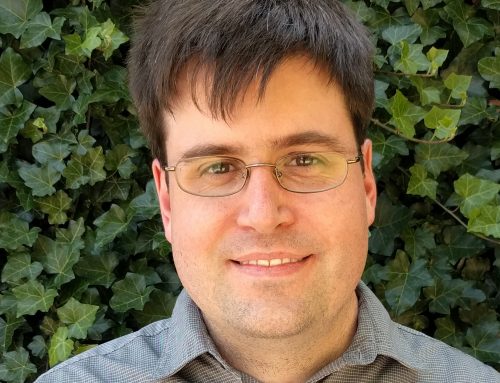Picture a very large six-by-six-foot paper on which a nearly full-sized human form has been drawn in black charcoal. Surrounding the body is an uncertain atmosphere of earth-colored substance, clouds or mists. The figure lies horizontally on its back, appearing almost as a corpse except that it gives the impression that it might be desiring to stand up. The figure appears almost realistic, yet also symbolic of a generic human body.
What I have described is an actual drawing of a subject I have been drawing repeatedly for several months. This body in its various versions around my studio walls represents my attempt to find a metaphor or a symbol to express in visual and aesthetic terms what I believe is true of our present human condition.
The subject of conditio humana is certainly not new to the world of the arts. In one sense all art, directly or indirectly, is about the human condition. Centuries of art history brim with examples of art made expressly for the purpose of glorifying, questioning, or lamenting the human condition. The challenge I face as a Christian art maker is to find relevant, contemporary ways to “say things” about the biblical view of our humanness and our need for God’s answers and perspectives on our lives.
The horizontally positioned human form I have drawn and painted shows ambiguous signs of being both alive and dead. The horizontal body appears earthly as we are, but at the same time it seems to be longing for some kind of apotheosis or resurrection from its present state. The image evokes a sense of “being between” two conditions or states of existence. This “being between” is true of all believers in the Gospel.
The Bible gives me several important facts, all of which speak, in one way or another, of believers as creatures caught “between” two realities. Most importantly, the Bible reveals that I am a creature caught in a desperate state of affairs: I am a living creature, but in a very real spiritual sense I am dead without the promises of God. I belong to a race of creatures whom God made in His image to manifest His goodness and beauty, but because we rebelled against Him, He has cursed us to exist under the effects of death (Genesis 3:14-24). Wonderfully, however, I have also been blessed with the good news that God has not abandoned me to the full and devastating consequences of my evil rebellion. He sent His Son, Jesus Christ, as a magnificent proof of His mercy and kindness. Through Jesus, God made a clear and specific way to recreate me into a creature worthy of living in his Kingdom of Glory.
The contrast between two passages in the Apostle Paul’s writings illuminates the “between” state in which we believers find ourselves. In Colossians 1:13, Paul states: “For He [God] delivered us from the domain of darkness, and transferred us to the kingdom of His beloved Son….” Here Paul implies that our salvation is a feat accomplished—a work already performed and from which we completely benefit now. In Philippians 3:11-14, however, Paul says: “…in order that I may attain to the resurrection from the dead. Not that I have already obtained it, or have already become perfect [completely saved], but I press on in order that I may lay hold of [salvation at the resurrection]. Brethren, I do not regard myself as having laid hold of it yet…I press on toward…the goal for the prize of the upward call of God in Christ Jesus.” In the first passage Paul states what is true of all believers; namely, that the merciful, powerful work required to turn us from death and to head us unstoppably toward our completed salvation is done. It is done in the sense that nothing in this world can thwart the new direction and intended end, or telos, toward which all believers are turned when they believe, a direction manifested by their perseverance in belief. In the second passage Paul tells us, however, that he has not yet arrived at the completed salvation he refers to in the Colossians passage. Rather, he is “between” being not saved and being completely saved. He is in the process of being saved—the “between” state of all believers in this world.
“Being between” affects all areas of our lives as we experience them now. Several biblical texts speak clearly of our present condition and shed light on three areas in particular: the effects on our physical being, on our knowledge, and on our moral will.
Two passages, one in Romans and another in Philippians, imply effects of our present condition on our physical bodies. In Romans 8:19-20, Paul writes that “the anxious longing of the creation waits eagerly for the revealing of the sons of God. For the creation was subjected to futility….” This futility includes a dire moral effect, but it also implies a physical effect of the curse God placed on man and the earth as a consequence of man’s insane rebellion. The need for liberation from this curse is clear in Philippians 3:20-21, where Paul writes that “we eagerly wait for a Savior, the Lord Jesus Christ; who will [at the resurrection] transform the body of our humble state into conformity with the body of His Glory…” In our present state, our physical bodies suffer; they are weak, poisoned by sin and the curse of death, and inferior to the kind of physicalness God will give us at the completion of our salvation.
The often read passage on love in I Corinthians 13 confronts us with another important fact of our present condition. Paul says in verses 9-13, “For now we know in part…. For now we see in a mirror dimly, but then face to face; now I know in part, but then I shall know fully just as I also have been fully known.” In our present “between” state, our knowledge is dimmed, incomplete, and not what it will be when the promise is fulfilled. As well, a filled-out biblical theology tells us that as sinners our present knowledge is affected by a “natural” bent toward excusing our sin and hiding from the penetrating light of truth; we now know in part, but even that knowledge comes to us through a “bent” will and in a worldly atmosphere that suppresses the truth (Romans 1). Even as believers, we have not yet escaped the full effect of that suppressing power around us and in us. We are creatures started on a path of truth, becoming lovers of wisdom, yet we are still deeply affected by both our own sinful inclination toward hiding from true knowledge or using it for selfish ends. In our “between” state, we exist in a world in which lies are often preferred over knowledge of the truth.
In Romans 7:18-19, one of the most powerful and important passages in the Bible, Paul explains that we can know the truth and even desire to obey and to follow it and yet utterly fail to do so: “For I know that nothing good dwells in me, that is, in my flesh; for the wishing is present in me, but the doing of the good is not. For the good that I wish, I do not do; but I practice the very evil that I do not wish.” Paul’s testimony of the internal moral struggle that brought him to see his need for Christ’s mercy is the same struggle we continue to experience even after coming to belief. In our “betweenness” we find ourselves frustrated, broken, and all too often failing the deepest tests of our moral will and action. Only by the grace of God do we find strength to love moral beauty and to carry it out in our action and speech. Like the body in my drawings that wants to rise to a new state of existence liberated from its corpse-like condition, we have been spiritually turned from ignoring and running from righteousness to loving it and desiring it above all things.
The Apostle Paul understood very well what it means for a believer to be “between.” In Philippians 1:21-24, he agonizes over his heart and life being caught between living on this earth to serve Christ and going “home” where he knows his full redemption and freedom from sin and death await:
For to me, to live is Christ, and to die is gain. But if I am to live on in the flesh, this will mean fruitful labor for me; and I do not know which to choose. But I am hard-pressed from both directions, having the desire to depart and to be with Christ, for that is very much better, yet to remain on in the flesh is more necessary for your sake.
Even with this world’s many beauties, pleasures, and comforts—especially those we share with believing friends, family, and loved ones—we realize, in a spiritually alive and deeply felt way, that our experience in this present world falls tragically short of the life that awaits us. Like Paul, we have graciously been given new hearts. And our new hearts are caught between desiring to remain on with our loved ones—caring for and helping to meet their needs—and increasingly desiring to leave behind this world of evil oppression and false life.
As the years slip by, a slow but ever-so-certain conviction builds in me. As a husband, father, and now a grandfather, I am truly torn between caring and “being there” for those I love so deeply and being released from the embers of internal corruption that flare up in me and at times almost overwhelm me.
For now, being a believer in God’s merciful promise of salvation leaves me living out my life between two realities, just like the image of the body I have been drawing in my studio. I live between the reality of this world and the promised new existence that will be fully mine at the resurrection. I feel the powerful dynamics of being “between.” The seductions and temporal enjoyments this world offers “pull” me. Yet, I am utterly convinced of the unimaginable beauty of the life to come.
The Bible makes it clear that the experience of believers in this present world is at times touched with wonder and beauty and at others filled with tragedy and failure. Perhaps this position of being “between” is best understood as a time of trial, in the midst of which our persevering hope and faith becomes our most precious possession. Thus, our uncomfortable “between-ness” is designed by our Savior to be an earthly cocoon from which we will someday emerge as marvelous creatures made over in the image of Jesus Christ Himself.





